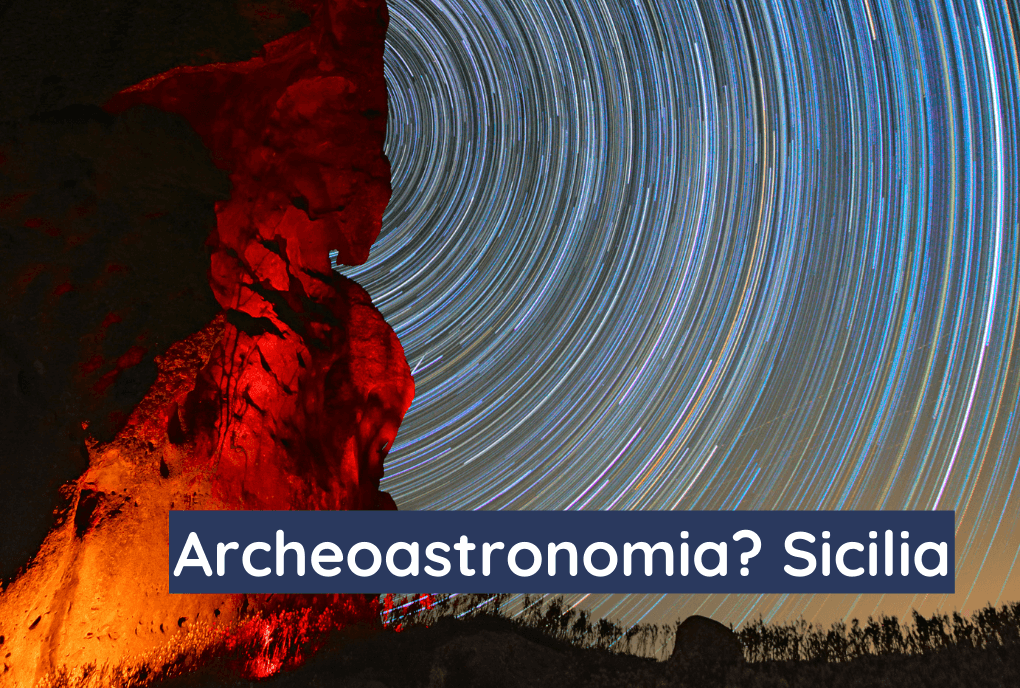
Archaeoastronomy? Sicily
Between the Peloritani and early Nebrodi mountains, in the heart of Sicily that turns to the Tyrrhenian Sea, there is a place where silence reigns supreme. A fairy-tale landscape populated by ancient rocks shaped by the wind, remote haunt of alchemists and legendary witches, privileged astronomical observatory. A place known to few, a treasure chest of secrets yet to be discovered.
The Argimusco plateau: land of cliffs, witches and stars
A short distance from the village of Montalbano Elicona and Tripi, in the Sicilian-Greek territory of the ancient and powerful Abacena, an atmosphere of indefinite magic envelops one of the most fascinating naturalistic sites in Sicily: the Argimusco plateau.
An amazing natural terrace that offers spectacular views of the Aeolian Islands, the changing landscapes of Etna and the Rocca di Novara, the ‘Matterhorn of Sicily.’
Argimusco, from Greek ‘shimmering fern’. Here, at 1,200 meters above sea level, among forests of ferns, holm oaks, and hollies, wind and rain have sculpted huge cliffs with human and animal likenesses, presences of millennial fascination. The Eagle, ready to take flight to Mount Etna, the Priest scanning the horizon from his one eye, the Alchemist turning his gaze to the Aeolian Islands, the Goddess Orante, a solemn 26-meter figure with hands joined in prayer, and again the Tower, the Baboon. Mighty guardians, imposing faces, making a presence from certain angles, only to return pure rock from other perspectives.
A short distance away counterbalance the huge sandstone blocks are the “Patriarchs of the Woods,” centuries-old oaks in the Malabotta Woods Nature Reserve. At the entrance to the rock park, past the huge stone uprights that serve as a portal, a map of the site allows one to find one’s way around the large sandstone rocks, among the Lion’s Gap, the Crag of Fire, the Great Crag, and the Crag of Water, key players in the history of the place, silent guardians, perhaps for this reason still so unknown. The Argimusco prehistoric site has not yet been affected by substantial excavation work. Findings so far place it in the Bronze Age, but Multiple scripts have been written about the birth of ‘Argimusco, tracing fascinating theories.
Secrets of the Argimusco
Man’s gaze toward the cosmos has always been full of hope, expectations and fears. Human beings have always questioned the sky, to orient oneself, to determine the alternation of the seasons, to understand natural phenomena, to know destiny, to find healing and cure, convinced of the influence of the stars on the organs and the body.
Dolmens and menhirs have been erected in different places on Earth in response to the need for contact with the divine. Unlike the dolmens of Caltanissetta and Ragusa, the imposing Argimusco rocks are the result of the erosive force of time. A work of nature so painstaking and surprisingly precise that there are those who do not think of the park as a natural site. Some believe it to be the work of legendary Cyclopes from prehistoric times. Atri placed it among nature sanctuaries, where rituals related to fertility and the cycle of the seasons were consumed. There are still those who describe it as the temple of the refined Arab medical culture of the Middle Ages, when astrologers, philosophers, and churchmen devoted to alchemy and gathered at the court of the king of Sicily used the place as a giant astronomical observatory for the practice of astral medicine.
Here it seems the fates of Arnaldo da Villanova, the greatest alchemist of medieval Europe, and Eleanor of Anjou, French queen wife of Frederick III of Aragon, intent on experimenting with medical practices. It is said that the king was cured right here through the use of the waters and the philosopher’s stone. Believed to be a stellar talisman, the Argimusco later continued to be frequented by alchemists and Freemasons, especially
Cagliostro and the Spadafora family
who attempted to decipher its code. A mystical territory, steeped in rituals and legends, haunt of the flying women of the Aeolian Islands, den of the sabbaths of the legendary witches of Novara and the devils that populated the recesses of Etna.
Myth or science?
There is a 360-degree unobstructed horizon from the Argimusco. The Rocca di Novara in the east is a valuable natural indicator of the equinoxes: the sun rises near the Rocca and, together with other points on the horizon, seems to have allowed humans since Neolithic times to make a real astronomical calendar useful for agricultural and religious practices.
The scientific community’s interest in this archaeoastronomical site has just begun, but the magic of the sky over the Argimusco has its roots in distant mythology and that deep connection between man and sky. At sunset, in the summer months and particularly in the evenings of June, the constellations of Swan, Arrow, Eagle, Snake, Ophiuchus, Virgo, Lion, Raven, Hydra, Crater are mirrored on the ground in the same order and sequence as the large cliffs, from east to west. They coincide in order of 10 out of 10, same sequence in heaven as on earth, a unique stellar talisman.
Just as in the sky the constellations are connected by ancient mythological stories, on the Argimusco the order of the cliffs traces precise dynamics related to the same remote legends. Here then on the plateau is the imposing Eagle boulder standing next to the Swan, just as in the sky the fate of the two constellations was united by Zeus. In love with the nymph Nemesis but not reciprocated, Zeus turned the nymph into a swan and Aphrodite into an eagle so that he would hunt her down until he pushed her into his arms, and to celebrate the triumph of his feat, he placed the constellations side by side. A script, that of the Argimusco, on the border between earth and sky, between history and legend, with an ending yet to be written.
A place out of time
On the Argimusco the sky envelops you majestically and the stars appear within reach. We at Magna Team are surprised every day by how much Sicily there is to tell. A land of infinite resources that encloses the essence of tourism slow, of traveling at one’s own pace, off the beaten path. Whether it is time-forged cliffs, human-made megaliths, or mysterious presences of divine will, the Argimusco plateau is a place out of time, where you can listen to the silence and set off towards the starry sea. Ready to hoist the sails?
by Stefania Capassi





